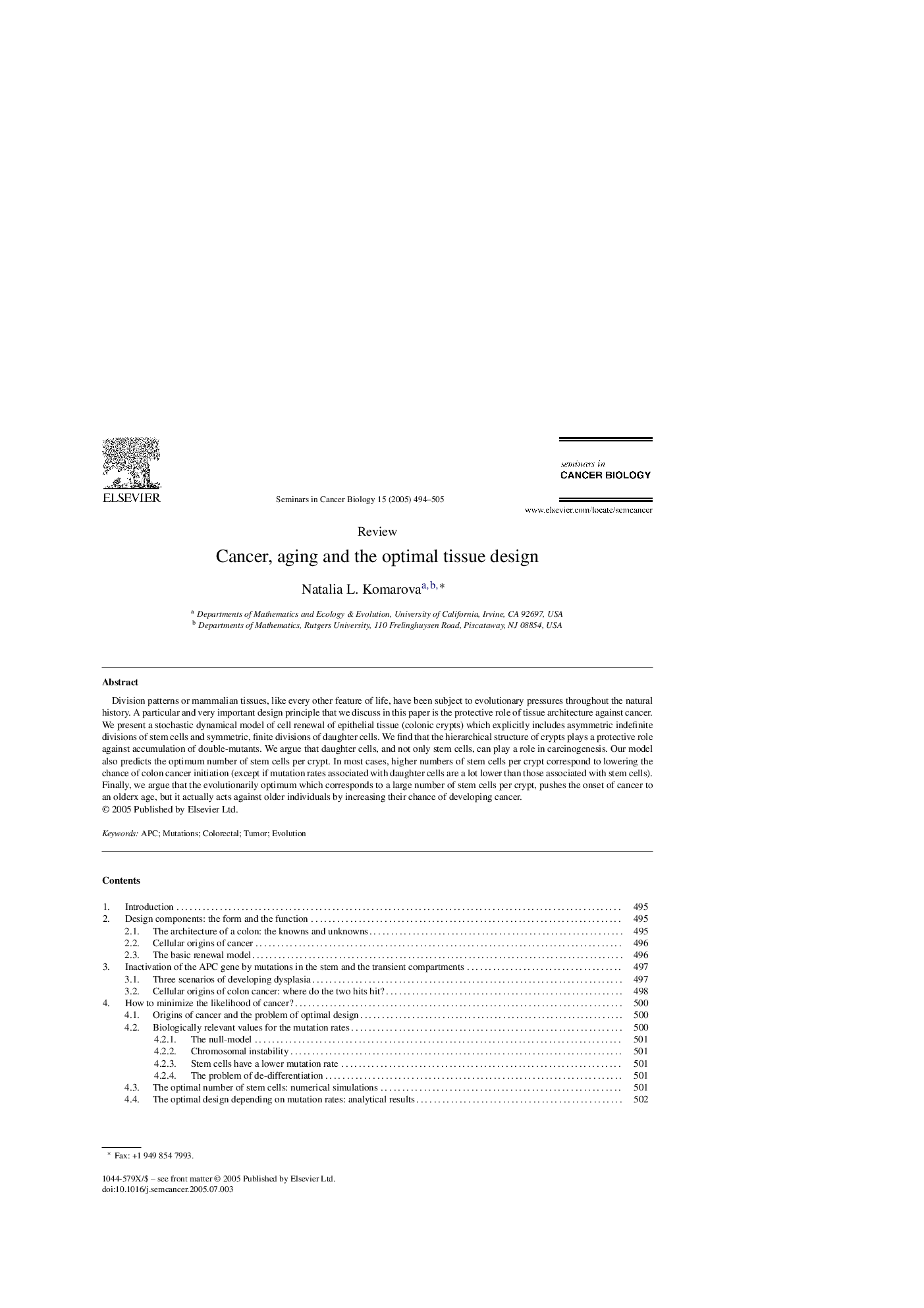| Article ID | Journal | Published Year | Pages | File Type |
|---|---|---|---|---|
| 10845681 | Seminars in Cancer Biology | 2005 | 12 Pages |
Abstract
Division patterns or mammalian tissues, like every other feature of life, have been subject to evolutionary pressures throughout the natural history. A particular and very important design principle that we discuss in this paper is the protective role of tissue architecture against cancer. We present a stochastic dynamical model of cell renewal of epithelial tissue (colonic crypts) which explicitly includes asymmetric indefinite divisions of stem cells and symmetric, finite divisions of daughter cells. We find that the hierarchical structure of crypts plays a protective role against accumulation of double-mutants. We argue that daughter cells, and not only stem cells, can play a role in carcinogenesis. Our model also predicts the optimum number of stem cells per crypt. In most cases, higher numbers of stem cells per crypt correspond to lowering the chance of colon cancer initiation (except if mutation rates associated with daughter cells are a lot lower than those associated with stem cells). Finally, we argue that the evolutionarily optimum which corresponds to a large number of stem cells per crypt, pushes the onset of cancer to an olderx age, but it actually acts against older individuals by increasing their chance of developing cancer.
Keywords
Related Topics
Life Sciences
Biochemistry, Genetics and Molecular Biology
Biochemistry
Authors
Natalia L. Komarova,
